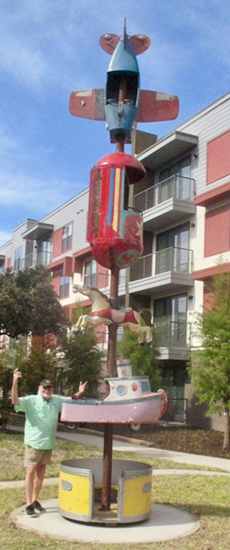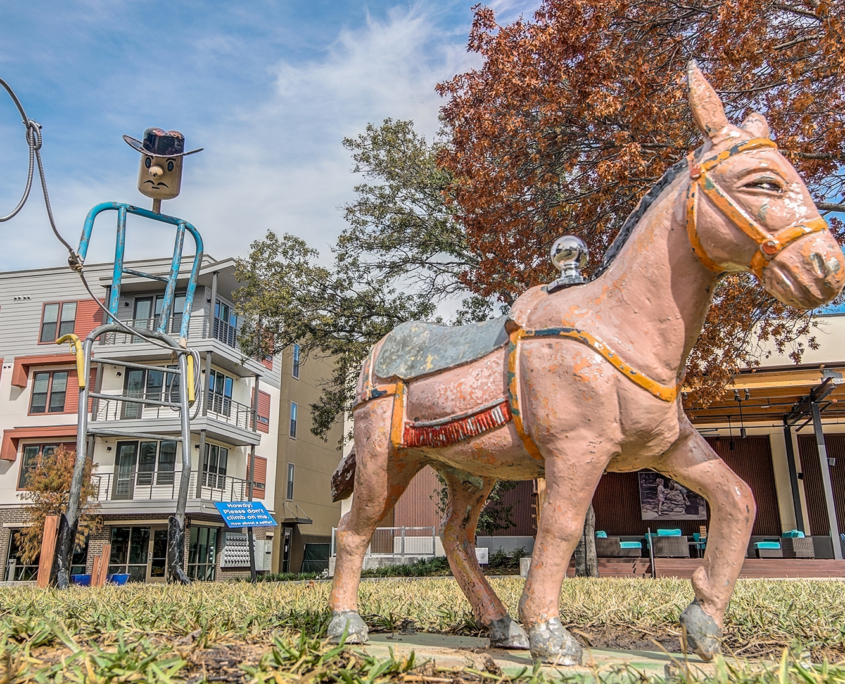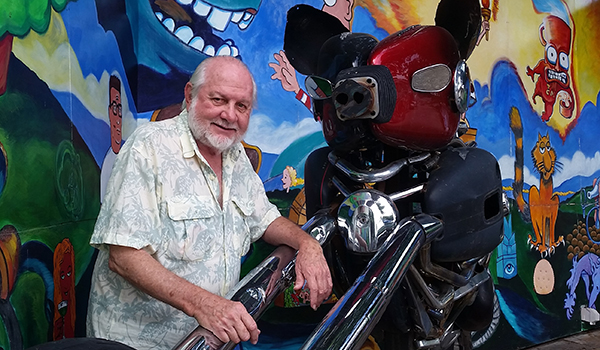Texas artist Bob “Daddy-O” Wade is best known for his sculpture and hand-tinted photographs depicting Texas style and culture. At Waterside, he’s the centerpiece of a public art program that celebrates the site’s history with sculptures made from repurposed amusement rides and murals using historic site photography. Here, he talks about the impact of public art, how history inspires him, and plays favorites when it comes to his work.
 How does public art influence how users experience a place?
How does public art influence how users experience a place?
The subject matter can pay homage to the history of the site and encourage visitors to inquire about the history of the property. If public art is fun and colorful, it contributes to the overall pleasant environment. Large scale implies financial commitment by the developer.
How have you seen public art evolve over the course of your career?
Early public art was small scale, conservative and décor for the buildings. Scale, subject matter, humor and site reference is more common now. Many cities have a “percent for art” and are able to commission local or international artists for a variety of indoor and outdoor sites.
Did the fact that the sculpture and photographs originate from the site play a role in your work?
I was thrilled to work with existing 1950’s photos and kiddie ride components. I have recycled many objects into sculpture numerous times and hand tinted photos for years.
Where did you draw inspiration from to repurpose the amusement rides into each sculpture?
Scale plays a big role, as each sculpture must fit the location. Many photos were taken and cutouts of each object were moved around into a variety of options. The cowboy needed some alterations and interactive with the small donkey seemed appropriate for a kid’s photos op.
What is your favorite piece at Waterside? Why?
I like each for different reasons, but the totem seems to “tower” over the others and contains objects from many of the rides. It is sort of a “shiskabob” Wade.




